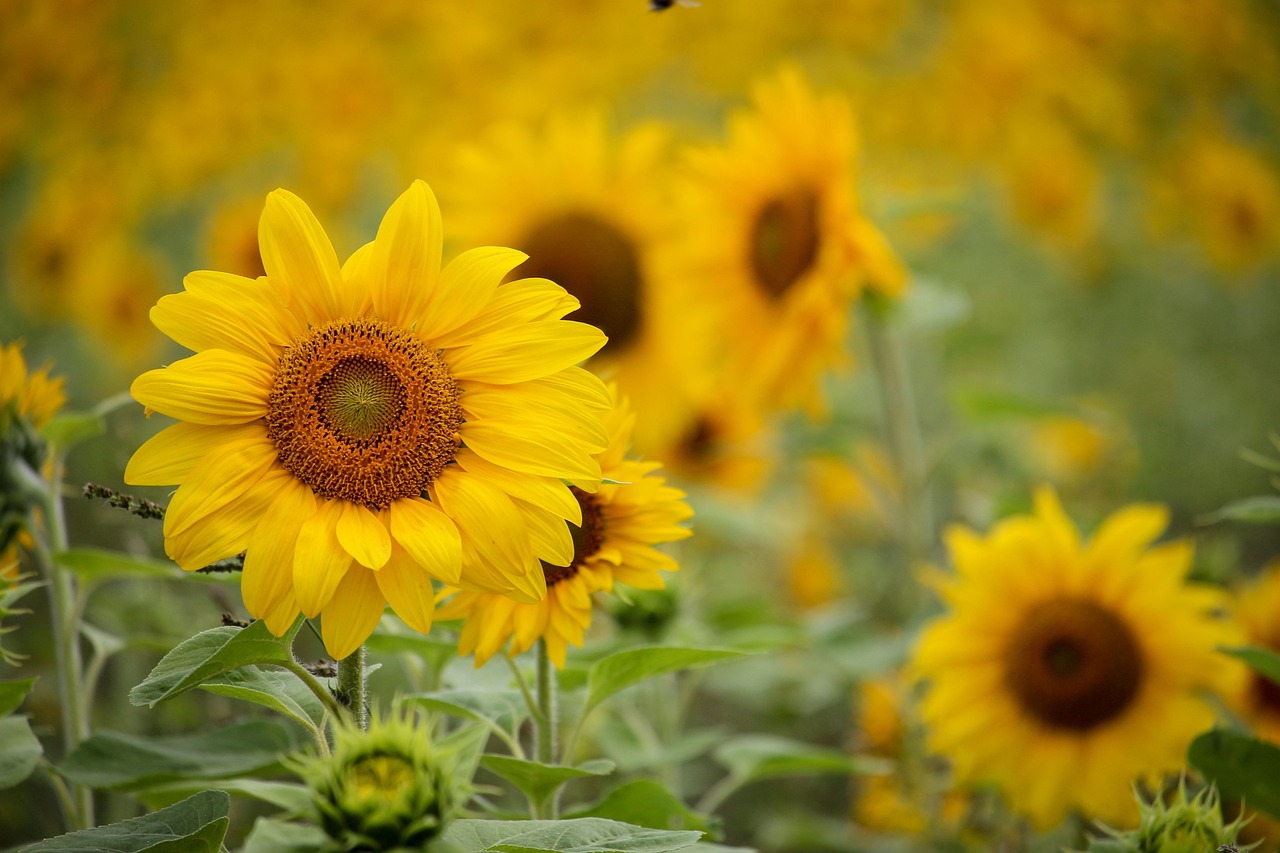
Sunflower
Helianthus annuus
Basic Information
🌿 Family: Asteraceae🗺️ Zone: 2-11
Other Names:
- Common Sunflower
- Giant Sunflower
🌡️ Ideal Temperature : 65°F – 85°F
🔥 Heat Tolerance: Up to 100°F
❄️ Cold Tolerance: Down to 25°F
🌱 Type: Annual
Layers
- Herbaceous
Functions
- Edible
- Wildlife Attractor
- Pollinator
- Mulcher
- Dynamic Accumulator
- Erosion Control
- Windbreaker
- Border Plant
- Biofuel
Pests
Companions
- Corn
- Cucumbers
- Squash
- Beans
- Lettuce
Plants to Avoid
- Potatoes
Description
Sunflowers are tall, annual plants with large, bright yellow flowers that can grow up to 3.6 meters (12 feet) in height. They have deep taproots that improve soil structure and reduce erosion. The flowers produce abundant nectar and pollen, attracting bees, butterflies, and birds.
The plant thrives in full sun and well-drained soil. It is drought-tolerant once established and can grow in a variety of soil conditions. Sunflowers are commonly used as windbreaks, living fences, and companion plants.
🌞💧 Sun and Water Requirements:
- Prefers full sun (6-8 hours of direct sunlight daily).
- Drought-tolerant but benefits from moderate watering.
- Grows well in well-drained, sandy or loamy soils.
✂️🫘 Methods to Propagate:
- Seeds: Direct sow in the garden after the last frost when the soil is at least 10°C (50°F).
- Spacing: Plant seeds 2.5 cm (1 inch) deep, spaced 30 cm (12 inches) apart.
🧑🌾👩🌾 When to Harvest:
- Flowers bloom in summer and early fall.
- Harvest seeds when the back of the flower head turns brown.
- Allow seeds to dry completely before storage.
Purpose
Sunflowers serve multiple purposes in a permaculture system:
- Edible: Seeds are rich in protein, healthy fats, and minerals.
- Wildlife Attractor: Provides food for bees, butterflies, and birds.
- Pollinator: Attracts beneficial insects for pollination.
- Mulcher: Large leaves decompose quickly, adding organic matter.
- Dynamic Accumulator: Draws nutrients such as phosphorus and potassium from deep in the soil.
- Erosion Control: Deep roots stabilize soil and prevent erosion.
- Windbreaker: Tall plants can be used as a wind barrier.
- Border Plant: Creates a natural border or privacy screen.
- Biofuel: Produces high-oil-content seeds for biodiesel.